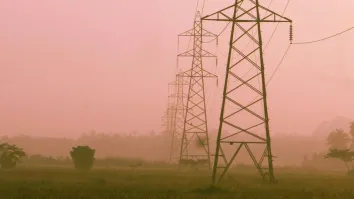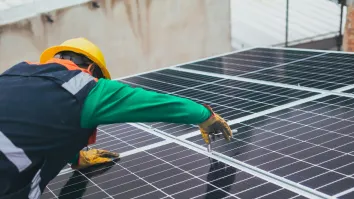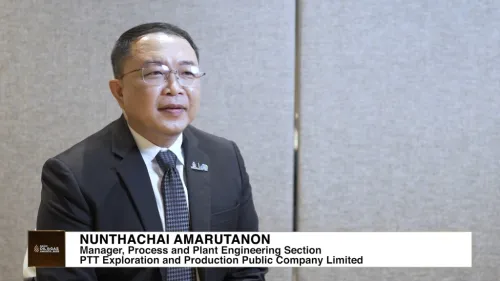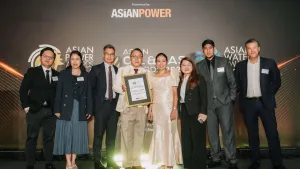Taiwan Offshore Wind Series Part 2 — "Lessons Learned"
By John Yeap, Nick Wang, James HarrisTaiwan is undoubtedly one of Asia's most exciting jurisdictions for offshore wind development right now. A well-regulated framework coupled with cost-reflective tariffs has allowed the island to attract some of the biggest names in the offshore wind sector.
However, progress to date has not been without some hiccups. In Part 2 of this two-part series, we look at some of the challenges that have arisen and consider the implications for the future development of the offshore wind sector in Taiwan.
Reduction in FIT year-on-year
Policy-driven subsidies such as feed-in tariffs are expected to reduce over time, a reflection of reducing unit costs. However, reductions that are arbitrary signal regulatory risks for sponsors. The tariff for 2019 for offshore wind PPAs saw a reduction of around 5.7% compared to the 2018 tariff.
The current tariff is an average of $0.1788/kWh (NT$5.5160/kWh) for 20 years, with the first 10 years being $0.2036/kWh (NT$6.2795/kWh) and the remaining 10 years being $0.1343/kWh (NT$4.1422/kWh).
This reduction in the tariff is widely seen as a political response to domestic concerns that the tariff was unreasonably high when compared to similar projects around the world. However, as is often the case, it is difficult to compare project costs and returns based solely on the regulated tariff. Other key factors such as marine and site conditions, as well as the availability of a local supply chain, will need to be considered in order to fully determine a cost reflective tariff.
Taiwan does not have an established local supply chain, but as projects are built and commissioned, allowing a local supply chain to develop, unit costs should reduce, and when that happens, tariffs should reduce to reflect lower unit costs. The fact that the Taiwanese government had apparently so rapidly acquiesced to public concerns has instead inevitably led to the perception that the voice of public opinion will be an influencing factor on the island's energy policy.
Grid connection
Offshore wind projects often give rise to at least two grid connection challenges. Firstly, it is unlikely that areas with high wind resource will have high load. It will therefore be necessary to develop the grid network to connect the turbines to the main grid, which may be of some distance.
Secondly, the introduction of large intermittent generation will usually require grid augmentation to absorb such generation. In this regard, Taiwan faces similar challenges.
Taipower has said that it will provide grid connection to all the projects allocated with capacity. However, it falls short of making any commitment to provide grid connection on time nor agreeing to provide any compensation if grid connection is delayed. The PPA does not provide for compensation from Taipower. There is therefore uncertainty for sponsors on the ability to test and commission the plant when they are ready to do so.
Local content requirements
An underlying policy element in Taiwan's offshore wind programme was to establish the island as a regional supply hub for offshore wind projects. The requirement for localising the supply chain was therefore an important factor for the Taiwanese government in the selection of the winning projects for the 3,836MW allocated in Phase 2 allocation in April 2018.
However, the ability of developers to meet such local content requirements has been impeded by the shortage of experienced local talent and domestic fabrication capabilities. As Taiwan has an advanced manufacturing industry, these challenges should not be insurmountable, and Taipower has said that it is working with local universities and technical colleagues to train talent, although this will take time. The greater challenges instead will be in sourcing domestically the sophisticated machinery required, such as wind turbine installation vessels.
Nevertheless, despite such challenges, there is indication that both sides of the project are working towards finding a solution. For instance, it has been reported that despite Ministry of Economic Affairs (MOEA) reprimanding a developer for failing to meet the local content requirements in two areas, namely submarine foundations and foundation piles, it has accepted the developer's interim measures and action plan to address these issues, such as obtaining proof from the relevant supplier attesting that the failure to meet the local content requirements is due to lack of production capacity, setting up an industry fund to help subcontractors and to train electric welding workers, giving priority in relevant bidding process for procurement to subcontractors that have successfully completed training, and expediting its plan to set up local assembly plants (to work with local suppliers) in Taiwan.
Local vessels
Unlike some other places in Asia, Taiwan currently does not make the use of locally-flagged vessels mandatory. Whilst China and Japan, for instance, restrict the usage of foreign-flagged vessels, no such restriction currently exists in Taiwan. There is a restriction on the use of People's Republic of China (PRC)-built and PRC-flagged vessels, but not on other foreign vessels.
However, recently two government agencies in Taiwan have been considering a mandatory requirement for the use of Republic of China (ROC)-flagged vessels for certain offshore wind farm construction activities. It would appear that this has been a response to some local shipowners and operators who have complained about the use of foreign vessels when local vessels are available.
The Bureau of Energy (BOE) is discussing with developers, contractors, vessel operators, and industry experts, on vessel specifications required for offshore wind construction and the availability of qualified ROC-flagged vessels.
At the same time, the Maritime Port Bureau (MPB) is considering restrictions on the use of non-ROC-flagged vessels for offshore wind construction, as well as a possible liberalisation of the requirements for a vessel to fly the ROC flag. Under Taiwan’s Law of the Ships, a vessel can qualify to fly the ROC flag only if it is owned by a ROC national or by a company which has over half of its capital or shares owned by ROC nationals.
There have been concerns amongst developers over the anticipated mandatory requirement to use ROC-flagged vessels for certain offshore wind farm construction activities, due to concerns that local vessels do not meet necessary specifications, are not available or are more expensive than foreign vessels.
Going forward
Taiwan's offshore wind sector has therefore seen some key challenges arising. However, despite the reduction in FIT, uncertainties with grid connection, strict local content requirements, and potential mandatory use of local vessels, interest in Taiwan's offshore wind sector remains strong.
The third phase of allocation is expected to be announced later this year, and some key players have already expressed their interest in participating. The third phase will allocate capacity to come online during 2026-2030.
Some players are already reported to be considering entering into corporate power purchase agreements for future projects. With the amendment to the Electricity Act in 2017 allowing renewable energy to be sold directly to non-utility companies (Google being a party to the first of such corporate PPAs), more corporate PPAs can be expected to be entered into as increasing number of local and international companies become more conscious with their carbon footprint.




















 Advertise
Advertise








